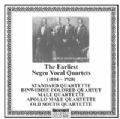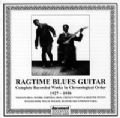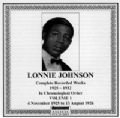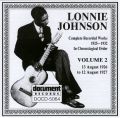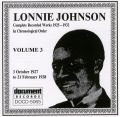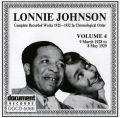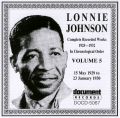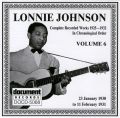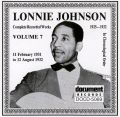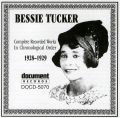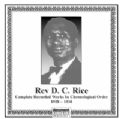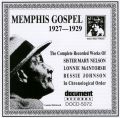"Document 5000 Series "
Viewing 61 to 72 of 700
|
The Earliest Negro Vocal Quartets 1894 - 1928 Various artists. Genre; Vocal quartets, spirituals and secular. Acapella, or with guitar or banjo accompaniment. Informative booklet notes by Ray Funk. Before blues, before jazz, the tradition of black male quartets, four-part harmony singing by African Americans was an established tradition of richness and complexity. Little recognised, almost all of the earliest aural artefacts of music by African Americans were quartet selections. All known examples of these extremely rare recordings are presented on this collection. Several of these are the only copies of a particular artefact and the listener must appreciate that these recordings stem from the dawn of recording technology and many are in poor shape such as the only known surviving cylinder by the Standard Quintette, Keep Movin. The Standard Quintette who recorded several cylinders for Columbia in 1894 were active on the concert stage at the time. This is the first Nineteenth Century recording of African American music that has been recovered and is an event despite the fact that what music remains is buried under a great deal of surface noise. Continued... More Info on our New Store >> |
||
|
Ragtime Blues Guitar 1927 - 1930 Various artists.
Genres: Ragtime guitar, Blues Guitar.
Informative booklet notes by Chris Smith.
Detailed discography.
Abridged from this CDs booklet notes.
The syncopated music that its black originators called “ragtime” was developed as a piano music in the last decade of the 19th Century, about the same time that the blues were also taking shape as a musical genre. Ragtime was a coming to terms between African cross-rhythms and the formalised syncopation of European art music and thus served equally as a vehicle for Scott Joplin's doomed ambition to be taken seriously and as a safely exotic craze for whites. Pop fashion moved on, to take up and dilute other black musical creations but ragtime entered the American folk consciousness, both white and black; in the Eastern states, particularly, it became a vital component in the sound of black blues, its lilting dance rhythms permeating, sometimes dominating, the ideas of the musicians of Virginia, the Carolinas, and Georgia. Controll... More Info on our New Store >> |
||
|
Lonnie Johnson Vol 1 1925 - 1926 Lonnie Johnson, vocal, guitar. Violin, kazoo, harmonium. With contributions by James Johnson, violin, piano; James "Steady Roll" Johnson, vocal; John Arnold, piano; De Loise Searcy, piano; Victoria Spivey, vocal. Informative booklet notes by Chris Smith. Abridged from this CDs booklet notes. More Info on our New Store >> |
||
|
Lonnie Johnson Vol 2 1926 - 1927 Lonnie Johnson, vocal, harmonium, guitar. Includes recordings by; With contributions by; James Johnson, violin; John Erby, piano, De Loise Searcy, piano. Genres; Blues, Blues Guitar, Female Blues vocal, New Orleans Blues. Informative booklet notes by Chris Smith. From this CDs booklet notes; More Info on our New Store >> |
||
|
Lonnie Johnson Vol 3 1927 - 1928 Lonnie Johnson, vocal, guitar, violin. Includes two titles by "Keghouse", vocal. Genres: Blues, Blues Guitar, Blues Violin, String Band, New Orleans Blues. Informative booklet notes by Chris Smith. From this CDs booklet notes. More Info on our New Store >> |
||
|
Lonnie Johnson Vol 4 1928 - 1929 Lonnie Johnson, vocal, guitar. Includes: With contributions by: Clarence Williams, piano; J.C. Johnson, piano; Joe “King Oliver”, cornet; Hoagy Carmichael, percussion, vocal. Genres: Blues, Blues Guitar, Jazz Guitar, Country Blues. From this CDs booklet notes. More Info on our New Store >> |
||
|
Lonnie Johnson Vol 5 1929 - 1930 Lonnie Johnson, vocal, guitar. Includes duets with: Genres: Blues, Blues Guitar, Jazz Guitar, Blues Piano. Informative booklet notes written by Chris Smith. From this CDs booklet notes. More Info on our New Store >> |
||
|
Lonnie Johnson Vol 6 1930 - 1931 Lonnie Johnson, vocal, guitar. Includes duets with: With contributions by: James P. Johnson, piano; Clarence Williams, washboard, Alex Hill, piano. Genres: Blues, Blues Guitar, Blues Duets, Blues Piano. Informative booklet notes by Chris Smith. After the desperation of “Headed For Southland” (see DOCD-5067), the two part I Got The Best Jelly Roll In Town formed a light-hearted interlude in Lonnie Johnson’s 23rd January 1930 session. Featuring some impressive guitar, even by Johnson’s high standards, it’s the first tryout of a song which, as “Jelly Roll Baker”, he was to record again more than once. The singing on this version is remarkable, given the very slow tempo. For the last two titles of the session, Lonnie switched to piano, which he hadn’t played on disc since 1926; by 1930, he had worked out a favourite accompaniment, featuring a staccato, four-to-the-bar chordal bass part, over which are laid darting right hand figures that are clearly inspired by his guitar playing. Continued... More Info on our New Store >> |
||
|
Lonnie Johnson Vol 7 1931 - 1932 Lonnie Johnson, vocal, guitar, piano. With contributions by Fred Longshaw piano. Genres: Blues guitar. Informative booklet notes by Chris Smith. From this CDs booklet notes. More Info on our New Store >> |
||
|
Bessie Tucker 1928 - 1929 Bessie Tucker, vocal. With contributions by: K.D. (Mr. 49) Johnson, piano; Jesse "Babyface" Thomas, guitar. Genres: Female vocal blues; Country blues, Texas blues. Informative booklet notes by Roger Misiewicz. Taken from this album's booklet notes. However, once you hear her voice, immediately there is a marked difference from what you would have expected. A sombre, even somewhat dangerous aura comes immediately to the forefront. Moans, songs of travel, jail, fights with men, women and knowledge of the police are brought forward in a manner that could be artistry of the highest level, or otherwise mere brutal honesty - telling the stories she knew in song directly, personally, and immediately. If you listen with the latter assumptions, this initial session has a slice of life quality seldom equalled in the blues. Continued... More Info on our New Store >> |
||
|
Rev D C Rice 1928 - 1930 Rev D.C. Right, sermons with singing. Includes; Mr. Hunter, trombone, Louis Hooper, Rev D.C. Right, sermons with singing. Includes; Mr. Hunter, trombone, Louis Hooper, piano; Unknown, mandolin, triangle, trombone, stand-up bass, tambourine, trumpet, drums. Genres: Preacher with Sermon and Singing accompanied by instruments. Gospel. Informative booklet notes by Roger Misiewicz From this album's booklet notes. This description must describe to a tee the experience of being at a service held by the Reverend D.C. Rice. Recordings begin with words of teachings, short passages from the bible, warnings not to stray from the path of good and then.. the good reverend, his congregation, musicians and singers erupt into a joyful (it is tempting to use the word riotous) sound that brings together jazz and gospel, in a way that would be inspirational to the most ardent non-believer. Continued... More Info on our New Store >> |
||
|
Memphis Gospel 1927 - 1929 Rev. Sister Mary M. Nelson, vocal. Booklet Notes written by Ray Funk & Mason Damrau. Memphis may be better known for the blues or Sun Records but it has been equally important as a centre for black gospel music. The quartet scene with groups like the Spirit of Memphis, the Southern Wonders and Sunset Travelers has been documented in Kip Lornell's book, Happy in the Service of the Lord: Afro-American Gospel Quartets in Memphis. Two of the greatest gospel songwriters, Lucie B. Campbell and Rev. W. H. Brewster, both called Memphis their home. Equally important is the fact that Memphis was the place where the most important of all the holiness denominations, the Church of God in Christ, was founded and is still based with annual conventions every fall. It was 1895 when Bishop Charles Mason founded the Church and, in its flock, many of the great gospel singers have flourished from Ernestine Washington to contemporary groups like the Clark Sisters. Continued... More Info on our New Store >> |
||

